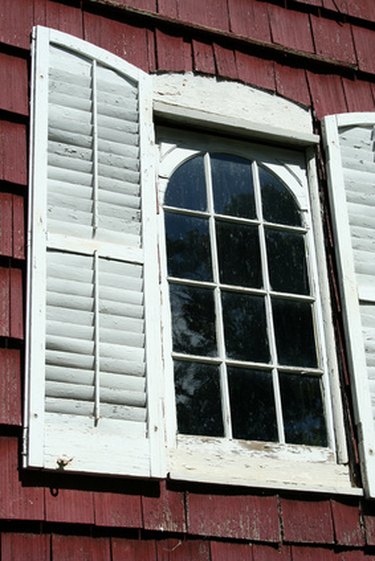
A six-month hurricane season, combined with an extensive history of devastating storms, has played a central role in establishing Florida's building codes. Rules and regulations governing the manufacture and installation of hurricane windows are a major part of this code and are constantly changing to keep up with new technology and methods. Specific requirements can vary, depending on the specific county. A check with the local building authority prior to installation can help you avoid issues later.
History
Video of the Day

Even with the earliest home construction in Florida, hurricane shutters were considered an important and common feature. As shutters became less popular, the use of plywood or metal window coverings came into fashion. Modern hurricane, or impact-resistant, windows represent the most current advancement in building technology, offering improved protection over previous methods.
Video of the Day
The Miami-Dade Standard

In 1992, Hurricane Andrew devastated south Florida. According to the National Hurricane Center, Hurricane Andrew is considered the most expensive natural disaster in United States history, causing more than 25 billion dollars in damage. In the aftermath of this storm, the building code for the Miami / Dade County area underwent a major overhaul, resulting in one of the best and safest set of building regulations in Florida. This code is commonly used as a standard for rating hurricane windows and provides an extensive list of regulations and specifications for the manufacture and installation of hurricane windows.
Impact Tests

For a window to be certified as hurricane impact resistant, it must pass various testing, dependent on it's intended use. The Florida Building Code outlines the two most common types of impact-resistant testing; large-missile-resistant testing and small-missile-resistant testing. Large-missile impact tests involve launching a 6-foot-long two-by-four, weighing 9 pounds, into a window at 34 mph. The small-missile-resistant test uses 10 ball-bearings fired into the window at 50 mph. Upon successful completion of the appropriate test, the window can be certified as impact-resistant.
Installation
The installation of hurricane-impact windows in Florida is as important as the construction of the window. Installation guidelines are designated by the state but are subject to additional county requirements and inspections. For example, according to the Pinellas County building code, if a homeowner replaces more than 25% of a home's existing windows at once, the new windows have to be hurricane-impact-resistant. Other requirements, such as installation methods, types of fasteners used and sealants, can be required by local building authorities.